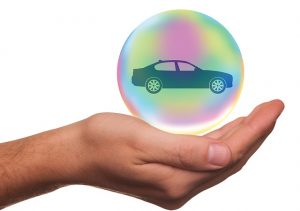Tips For New Car Owners

One of the most important things to remember about owning a car is recurring cost. You’ve got to have money to own a car. Registration will cost a percentage of retail price and be annually required.
There are going to be insurance fees. You’re going to need to change the oil two to six times a year, depending on how much you drive. You’re going to put between 15k and 30k miles on your vehicle annually as well. Then there’s the cost of repairs, the unexpected, traffic tickets, parking, and cleaning to consider. You may even have to pay for storage.
According to Nerdwallet, the cost of owning a car in California is over $8,400 a year, or about $700 a month. That, notably, does not include gasoline. With such expenses in mind, it becomes considerable to determine ways you can cut costs. When it comes to debt from a new car, there are a number of ways to settle this financially; most notably: paying in full.
Contrasting New Car Options
If you’re paying for a vehicle on a monthly basis, you’re paying interest. So let’s run some numbers—let’s think about this critically. Say you buy a $20k car for $1k down and $300 a month. You’ve got a $19k principle to pay back. Without interest, that’s going to take you a little over five years and three months to pay back.
Interest at 2% compounding annually on the principal adds $380 a year, for an additional $2,002, minimum, on the cost of the car. Now in that time, you’re going to average 15,000 miles a year. At a minimum, you’ll have 78,000 miles on your car at the end of five years and three months. If you actually drive 20,000 miles a year, you’ll have voided the 100,000-mile warranty.
By contrast, if you can pay for a new vehicle flat out at $5k, and run it without monthly payments for two years, you have clearly acquired greater vehicular use for reduced total cost. Right now, the best window on a used vehicle—if you search carefully enough—is going to be between $5k and $10k.
Searching For A Good Pre-Owned Vehicle
In terms of mileage, look for a vehicle with between 50k and 150k miles. Provided you get the car checked out before you buy it, pay in cash, and are sure to carefully maintain it, it’s not unexpected that you might get 50,000+ miles out of such a used vehicle—that’s 3.33+ years of use, on average. But if you’ve paid in advance, annual costs go down several thousand dollars.
Inside two years, your choice to pay the vehicle’s cost in full, rather than financing, has paid for itself. From there, you’re ultimately profiting over the cost of paying on a monthly basis for a new vehicle.
As an added bonus, after two or three years, you can still sell a used vehicle for a few thousand dollars. Ironically, depreciation isn’t as great when purchasing and selling a used vehicle as it is when purchasing a new vehicle and then selling it used. Not directly, anyway.
Plus, you’ll have additional resources to augment and optimize a used vehicle. Speedy Towbars can help you install a tow hitch, allowing you to pull along a trailer. You might install a solar panel on a van or an SUV. You could install a “snorkel” for off-road treks in a jeep. There are a lot of options!
Takeaways
If you’re a new car owner, you’re going to need to pay annually to keep the vehicle. What you pay will depend on what sort of vehicle you own. Going the “used” or “pre-owned” route will likely save you money while providing you the same vehicular utility, and is so the most recommendable choice for new car owners.






